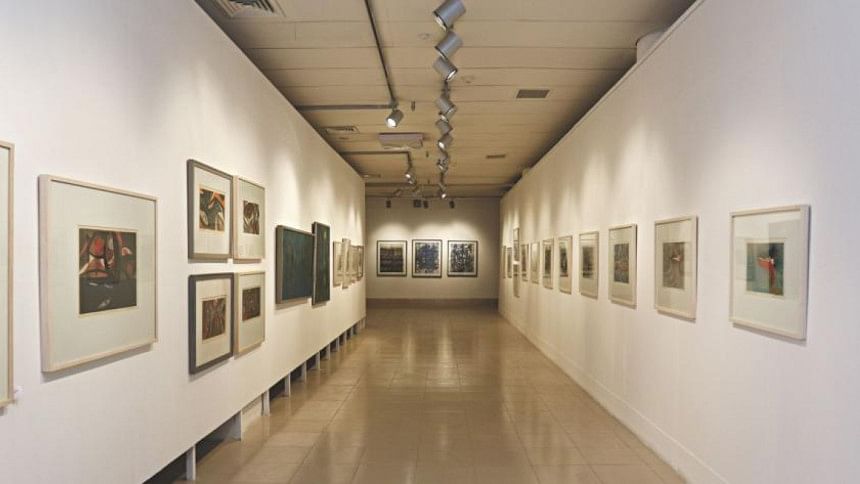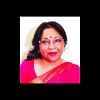Missing out on the zeitgeist experience

BRAVING the horrendous city traffic, I arrived at the 2016 Dhaka Art Summit (DAS) at Shilpakala Academy on a Sunday afternoon. My curiosity was greatly aroused by the write-ups and reports, which promised that the summit (organised by The Samdani Art Foundation) offered a "one of a kind experience", cutting across the borders of cultures, styles, forms and traditions. According to curator Diana Campbell Betancourt, DAS' major goals were to create "a research platform and a hub for thought leaders, artists, curators, art and academic institutions" and to be "an arts festival for the local community with a strong educational aspect."
I should clarify at the onset that I am not an art critic. However, being an art enthusiast, I was interested to gauge how well the zeitgeist would work in fostering art and creativity in a country steeped in tradition. As I navigated the tricky terrain of galleries and displays, I was "lost" in the quagmire of a canvas forest (Burmese artists Tun Win Aung and Wah Nu), a blaring display of "light blindness" and the monochromatic serenity of Waqas Khan's lined panels. I use the word "lost" to describe my initial impressions of the exhibition, since it seemed to lack structure and flow. The experience was made more daunting because of the lack of access to catalogues or audio or video guides. Even the more traditional "Rewind" section, where unique pieces of Sultan and Rashid Choudhury caught my eye, seemed to be groping for its identity! Disappointingly, the "volunteers" were generally clueless about the content of the exhibition. When I asked one of them about Atish Saha's performing art piece "Memories of my Mother's womb", I was simply directed to read the description at the entrance. After straining my ageing eyes for five minutes (since the writing was in such small print that one would need a magnifying glass to decipher anything), I gathered that the artist had locked himself in a cage for 53 hours to experience the confinement in a mother's womb. A novel idea, no doubt, but, in the absence of proper context and interactive dialogue, it seemed that free artistic expression in this case had crossed over to the realm of the bizarre!
My criticism perhaps pertains more to the facilitation rather than the content. There was an overall lack of continuity that may have hampered the viewers' understanding and critical appreciation of the projects. This could have been countered by some guided tours. The summit organisers wanted the event to be "not a biennial, not a symposium, not a festival — but rather somewhere in-between".
Sadly, throughout my visit I was in the realm of in-between, struggling to understand what should be my take-away from the summit.
As I mentioned, I am not an art virtuoso. But I am keenly interested in art and have made special efforts to visit most major galleries across the globe. In my opinion, art should serve two main purposes: it should have an educational value and also provide spiritual and intellectual stimulation. Regrettably, the DAS fell short on both these counts. I came out feeling somewhat unfulfilled. In fact, I wondered how the consolidated efforts of 300 artists, curators and other art professionals could have produced such minimal impact!
Perhaps the background talks by art critics, the performances and film programmes were meant to shed more light on the contemporary art and its diverse forms. I must confess that I did not attend any of the sessions, but I doubt if most of the general audience did either. I realise that the current trend is to take a multi-disciplinary approach to art. The idea is to not only permit freedom of expression, but also proactively engage the audience. Curators are, therefore, increasingly challenged to find the fine balance between educating viewers about artistic traditions and letting art speak for itself.
In this context The Samdani Art Foundation's attempt to introduce Dhaka viewers to a range of multi-faceted art forms is commendable. However, was the audience mentally prepared for this "evolved experience"? I can't tell -- but I wasn't. As I noted earlier, a greater effort in guiding the viewers would have gone a long way in making this world-class exhibition a local success. Perhaps the curators were concerned that organised tours would significantly interfere with the aesthetics of a personal art experience. And it is a valid concern. On the other hand, the more experimental a programme is in design or content, the greater is the barrier to public acceptance and appreciation.
I sincerely hope that the next Dhaka Art Summit will cater to visitors like me, who have a relatively limited amount of time to invest. My wish list for next year's DAS includes: more user-friendly labels, scheduled guided tours like those at the Met and other museums, more savvy volunteers. After all, there is no denying that a "cutting edge" art exhibition requires extra attention and effort to ensure that it is an uplifting and inspiring experience for the viewers.
The writer is a Tagore exponent.

 For all latest news, follow The Daily Star's Google News channel.
For all latest news, follow The Daily Star's Google News channel. 



Comments